new posts in all blogs
Viewing: Blog Posts Tagged with: 1996, Most Recent at Top [Help]
Results 1 - 10 of 10
How to use this Page
You are viewing the most recent posts tagged with the words: 1996 in the JacketFlap blog reader. What is a tag? Think of a tag as a keyword or category label. Tags can both help you find posts on JacketFlap.com as well as provide an easy way for you to "remember" and classify posts for later recall. Try adding a tag yourself by clicking "Add a tag" below a post's header. Scroll down through the list of Recent Posts in the left column and click on a post title that sounds interesting. You can view all posts from a specific blog by clicking the Blog name in the right column, or you can click a 'More Posts from this Blog' link in any individual post.
The World of Little House. Carolyn Strom Collins and Christina Wyss Eriksson. 1996. 160 pages. [Source: Library]
First sentence: We know Laura Ingalls Wilder best through her nine Little House books, which tell the story of her life as a pioneer girl.
Premise/plot: This biography of Laura Ingalls Wilder would be perfect for upper elementary or middle schoolers. In some ways it's "just" a biography, but, in other ways it's so much more than that. One thing that I loved about it, for example, is the inclusion of HOUSE PLANS for all the houses Laura Ingalls Wilder lived! That plus the inclusion of crafts and recipes and extension activities really just made me happy.
For any reader who loves the book series or even the television series, this one is a fun and easy-going read.
My thoughts: While I didn't learn anything "new" about Laura Ingalls Wilder, I found it a fun, delightful presentation of what I already knew. The only book that truly was packed with I-didn't-know that information was the recently released PIONEER GIRL. This biography shares an intended audience range of the actual books. So one could go from the series to this biography smoothly. (I can't imagine a fourth or fifth grader picking up PIONEER GIRL and finishing it. Pioneer Girl just has SO MANY footnotes.)
Easy to recommend this one!
© 2016 Becky Laney of
Becky's Book Reviews
Weighed in the Balance. Anne Perry. 1996. 373 pages. [Source: Library]
Out of all the William Monk mysteries that I've read so far, Weighed in the Balance was the one that has proved the hardest going. In other words, I found it dragging from almost start to finish. I'm not sure if it was my mood, or, if possibly it was the case, or perhaps even a bit of both.
Sir Oliver Rathbone has accepted a new case, for better or worse, and it's a matter of slander. He's defending a woman, a foreigner, Countess Zorah Rostova on a slander change. She has accused someone (Princess Gisela) of murder, and, won't back down even though there isn't a bit of evidence against the woman. Not that anyone looks until Rathbone hires William Monk to investigate. But still.
The case is frustrating and loathsome to him. Even after the trial starts, he is clueless as to what to say in her defense. He can't possibly win this case. It's a matter of how big a fool he wants to appear. Should he try to build a case that it is murder, or was murder, but that his client was mistaken in WHO did the crime? Or should he try to hush up the murder-aspect of it? Does he himself believe there was a crime committed? Can he work up a believable motive?
One character I appreciated more than the others in this one: Hester Latterly. I didn't have to yell at her even once while reading this one. I did, I must mention, have to yell at William Monk more than once. Rathbone, well, he always does the honorable thing, and rarely needs yelling at.
Hester has nursing duties in this book. She's tending a young man after an injury, and, he'll likely never walk again. She brings a young woman into his life, a woman first introduced in A Sudden Fearful Death. I do enjoy how the series works. It's a whole world the author has created, and, characters are always reappearing as they carry on their lives. It's nice to see. And it's not something you often see in a mystery series.
© 2016 Becky Laney of
Becky's Book Reviews
Daisy-Head Mayzie. Dr. Seuss. 1994. Random House. 56 pages. [Source: Library]First sentence:
It's hard to believe such a thing could be true, And I hope such a thing never happens to you. But it happened, they say, to poor Mayzie McGrew. And it happened like this...Premise/plot: Mayzie McGrew shocks everyone--first everyone at her school, and, then later the nation--when a daisy suddenly appears growing out the top of her head. So many unanswered questions?! What's to be done?!
My thoughts: I had never read this one before. Was I missing out? Not really. The story is a bit out of control and all over the place. Which may sound like a typical Seuss story, and, in many ways--at least in theory--it was. It just lacked a certain something.
Have you read Daisy-Head Mayzie? Did you like it? love it? hate it? I'd love to know what you thought of it!
My Many Colored Days. Dr. Seuss. Illustrated by Steve Johnson and Lou Fancher. 1996. Random House. 32 pages. [Source: Library]First sentence:
Some days are yellow. Some are blue. On different days I'm different too.Premise/plot: There's a color for each mood in My Many Colored Days.
My thoughts: I like the idea of this one, the premise of it. I like the exploration of moods and emotions and feelings. Of feeling many different ways, and, yet still being "me." I also appreciate the simplicity of the text. Some Seuss books are so very, very text-heavy.
Have you read My Many Colored Days? Did you like it? love it? hate it? I'd love to know what you thought of it!
If you'd like to join me in reading or rereading Dr. Seuss (chronologically) I'd love to have you join me! The next book I'll be reviewing is Hooray for Diffendoofer Day and The Bippolo Seed and Other Lost Stories. I'll be doubling up for the rest of the year each Saturday.
© 2015 Becky Laney of
Becky's Book Reviews
A Girl Named Disaster. Nancy Farmer. 1996. Scholastic. 320 pages. [Source: Review copy]
I read A Girl Named Disaster and Shabanu: Daughter of the Wind the same week. That fact definitely influenced my thoughts on both books--fair or not. Reading is subjective, after all.
Did I enjoy reading A Girl Named Disaster? Yes and no. I didn't exactly "enjoy" it. I found it a bit slow at the beginning, and, a bit rushed at the end. There were times I definitely found it interesting, but, I never really found myself loving it.
Nancy Farmer's A Girl Named Disaster is set in Mozambique and Zimbabwe in the early 1980s. Nhamo has an interesting relationship to the rest of the family. She dearly, dearly loves her grandmother (Ambuya), and is in return beloved of her grandmother. (She is in fact probably the favorite granddaughter.) But the rest of her family is a different story. They seem to blame Nhamo for the circumstances of her birth. Her mother returned home from school (high school??? college???) pregnant and married to a "useless" man, a man named Proud. Neither is in her life when the novel opens. Her mother died when Nhamo was a toddler--eaten by a leopard. Her father had disappeared even before that. Nhamo is, without a doubt, a hard worker. Yes, she is slightly bitter that her tasks are more difficult and time-consuming than her slightly-older cousin's--Masvita. But she isn't hate-filled and overflowing with attitude either.
Like Shabanu, A Girl Named Disaster introduces readers to a culture where marriage happens VERY early in life for girls--twelve to fourteen, and where a woman's worth is very much tied to her ability to produce children, particularly sons. Like Shabanu, A Girl Named Disaster features a heroine who is to be sacrificed via marriage. Like Shabanu, this marriage is MOST, MOST unwelcome. Dare I say this would-be marriage sounds even more unpleasant than the one in Shabanu--and I never thought I'd say that. Like Shabanu, the heroine makes the only choice she can under the circumstances....
Nhamo runs away from home in an attempt to make it across the border to Zimbabwe. Once there, she'll pretend to be Catholic--her mother attended a Catholic school--and seek refuge with nuns. Is she actually Catholic? No. Of course not. Her ideas of who Jesus is are far from sound, to say the least. But that is not exactly the point of A Girl Named Disaster.
Her journey to Zimbabwe is....much longer than she imagined it ever could be. It is not a journey of a few days or even a few weeks. MONTHS go by with Nhamo still struggling to reach her destination. It is her fight for SURVIVAL. It is definitely nature versus Nhamo...with Nhamo receiving a bit of help from the spiritual world.
Will Nhamo's life be better--easier--in Zimbabwe? Will she find her father? Will she find her father's family? Will she find welcome with them? What will happen to her if she doesn't find them? What will become of her? What are her chances of a decent life, a good life???
A Girl Named Disaster is slightly less depressing than Shabanu. That's not fair. It's not. The ending sees Nhamo with a bit of hope and a chance at a future.
Still neither book "feels" like a children's book. And when I do think of Newbery or Newbery Honor, I tend to think CHILDREN'S BOOK more than anything else. Arranged marriages, child-adult marriages, don't really come to mind. Still exposure to diverse titles can be a good thing. And both books offer readers something to think about.
© 2015 Becky Laney of
Becky's Book Reviews

By:
Becky Laney,
on 8/23/2015
Blog:
Becky's Book Reviews
(
Login to Add to MyJacketFlap)
JacketFlap tags:
friendship,
school,
Newbery,
J Fiction,
J Realistic Fiction,
1996,
MG Fiction,
MG Realistic Fiction,
books reviewed in 2015,
books reread in 2015,
Add a tag
The View From Saturday. E.L. Konigsburg. 1996. 176 pages. [Source: Bought]
I enjoyed rereading E.L. Konigsburg's The View From Saturday. Though I don't usually "enjoy" (seek out) stories with multiple narrators--alternating narrators--in this case it was just right or practically perfect. Readers meet a teacher, Mrs. Olinski, and the four students on the sixth grade competitive team for the Academic Bowl. (They are Noah, Nadia, Ethan, and Julian.) All five narrate The View From Saturday. Mrs. Olinki's chapters are of the BIG competition day, and each chapter generally ends with a question being asked of the competitors. Usually. The chapters narrated by the students cover much more time, generally are full of flashbacks. It is in these narratives that characters are developed and relationships explored. All four students in her class were connected BEFORE they were chosen.
View From Saturday is a great friendship-focused, school-focused coming of age novel. Each narrative is definitely unique. And I like how interconnected the stories really are.
When I think Newbery, this is the kind of book I think of most of the time.
© 2015 Becky Laney of
Becky's Book Reviews
The Christmas Tree. Julie Salamon. 1996. Random House. 118 pages. [Source: Bought]
The Christmas Tree is technically a reread for me, although I haven't reviewed it on my blog. I picked this one up because I remembered enjoying the movie adaptation of it. It didn't disappoint. What I like best about this feel-good Christmas story are the flashbacks.
The chief gardener for Rockefeller Center narrates Julie Salamon's The Christmas Tree. In his own words, this gardener tells of his search, his on-going, never-ending search for THE tree. If he's not looking for this year's tree, his mind is already on finding NEXT year's tree. The book is about one special tree in particular, one that led to an ongoing friendship.
One day the narrator spots THE tree from a helicopter. He learns it's on the property of a convent. He goes. He talks. He asks. He meets Sister Anthony THE nun who will decide if he can have the tree or not. They have more in common than he was expecting certainly. But. She's not ready or willing to part with the tree called, TREE.
Sister Anthony is a storyteller. She is. And the narrator turns out to be a good listener. Over several years at least, he keeps coming back to see her, to visit with her and hear her stories. He has things to share as well. Through these sections, readers learn of Anna.
In the flashbacks, readers meet a young orphan named Anna who eventually came to be raised at the convent. Her story is very personal, and it reveals her affection, her connection to nature. The young girl as you've probably guessed IS Sister Anthony herself.
I loved Anna. I did. Her part in the story is what made it work for me. It was her connection with the tree--in the past and present--that kept me reading.
© 2014 Becky Laney of
Becky's Book Reviews
Children in the Holocaust: Their Secret Diaries. Laurel Holliday, ed. 1996. 432 pages. [Source: Library]
Children in the Holocaust and World War II: Their Secret Diaries is an almost must-read in my opinion. It is incredibly compelling and emotional. Memoirs are great. They are. I have loved many autobiographies and biographies. But diaries are a bit unique. They tend to stay in the moment; there is a rawness perhaps in the emotions. They capture specific moments in time. They record the best and worst and everything in between. These diary entries are well worth reading.
These children's diaries are testimonies to the fact that telling the truth about violence is not harmful. In fact, one wonders how much greater harm these boys and girls would have suffered had they not written about the horrific events they were experiencing. Far more dangerous than reading about atrocities, I believe, is the pretense that atrocities do not occur. To turn our eyes away and refuse to see, or to let children see, what prejudice and hatred lead to is truly to warp our collective psyche. It is important for all of us--adults and children alike--to acknowledge the depths to which humankind can sink. The children teach us, by sharing their own direct experience of oppression, that nothing is more valuable than human freedom. This lesson alone is reason enough to read and to encourage children to read, these diaries.
This book gathers together diary entries from twenty-two writers. The countries represented include: Poland, Holland, Germany, Czechoslovakia, Austria, Hungary, Lithuania, Russia, Belgium, England, Israel, and Denmark. Seven of the twenty-two writers are from Poland. Some writers survived the war. Others did not. I believe that all of these entries have been previously published in some format, in at least one language. The listed age refers to the writer's age for the first diary entry printed in the book. This book provides excerpts from diaries. None of the diaries, I believe, are reprinted in full. These excerpts represent the diaries as a whole, and provide a bigger picture for understanding the war.
- Janine Phillips, Poland, 10 years old
- Ephraim Shtenkler, Poland, 11 years old
- Dirk Van der Heide, Holland, 12 years old
- Werner Galnick, Germany, 12 years old
- Janina Heshele, Poland, 12 years old
- Helga Weissova-Hoskova, Czechoslovakia, 12 years old
- Dawid Rubinowicz, Poland, 12 years old
- Helga Kinsky-Pollack, Austria, 13 years old
- Eva Heyman, Hungary, 13 years old
- Tamarah Lazerson, Lithuania, 13 years old
- Yitskhok Rudashevski, Lithuania, 14 years old
- Macha Rolnikas, Lithuania, 14 years old
- Charlotte Veresova, Czechoslovakia, 14 years old
- Mary Berg (pseudonym), Poland, 15 years old
- Ina Konstantinova, Russia, 16 years old
- Moshe Flinker, Belgium, 16 years old
- Joan Wyndham, England, 16 years old
- Hannah Senesh, Hungary and Israel, 17 years old
- Sarah Fishkin, Poland, 17 years old
- Kim Malthe-Bruun, Denmark, 18 years old
- Colin Perry, England, 18 years old
- The Unknown Brother and Sister of Lodz Ghetto, Poland, Unknown Age and 12 years old
I won't lie. This book is difficult to read. Difficult in terms of subject matter. It is an emotional experience. Readers are reading private diary entries. The entries capture the terror and horror of the times. They capture the uncertainty that almost all felt: will I survive? will I survive the day? will I survive the war? will my family? will my friends? will I witness their deaths? will I have ANY food to eat today? tomorrow? how much worse can it get? when will this all be over? will I be alive to see the end of the war? what if the Nazis win? The diaries capture facts and details. But they also capture feelings and reactions.
Shootings have now become very frequent at the ghetto exits. Usually they are perpetrated by some guard who wants to amuse himself. Every day, morning and afternoon, when I go to school, I am not sure whether I will return alive. I have to go past two of the most dangerous German sentry posts..., Mary Berg, February 27, 1942, p. 233
Dr. Janusz Korczak's children's home is empty now. A few days ago we all stood at the window and watched the Germans surround the houses. Rows of children, holding each other by their little hands, began to walk out of the doorway. There were tiny tots of two or three years among them, while the oldest ones were perhaps thirteen. Each child carried a little bundle in his hand. All of them wore white aprons. They walked in ranks of two, calm, and even smiling. They had not the slightest foreboding of their fate. At the end of the procession marched Dr. Korczak, who saw to it that the children did not walk on the sidewalk. Now and then, with fatherly solicitude, he stroked a child on the head or arm, and straightened out the ranks. He wore high boots, with his trousers stuck in them, an alpaca coat, and a navy-blue cap, the so-called Maciejowka cap. He walked with a firm step, and was accompanied by one of the doctors of the children's home, who wore his white smock. This sad procession vanished at the corner of Dzielna and Smocza Streets. They went in the direction of Gesia Street, to the cemetery. At the cemetery all the children were shot. We were also told by our informants that Dr. Korczak was forced to witness the executions, and that he himself was shot afterward. Thus died one of the purest and noblest men who ever lived. He was the pride of the ghetto. His children's home gave us courage, and all of us gladly gave part of our own scanty means to support the model home organized by this great idealist. He devoted all his life, all his creative work as an educator and writer, to the poor children of Warsaw. Even at the last moment he refused to be separated from them. ~ Mary Berg, August, 1942, p. 239
© 2014 Becky Laney of
Becky's Book Reviews
A Crown of Swords. Robert Jordan. 1996. Tor. 896 pages.
I enjoyed A Crown of Swords more than Lord of Chaos. (Though Lord of Chaos had a few GREAT scenes in it.) I took my time with A Crown of Swords knowing that if I forced myself to stick to a certain pace, I wouldn't enjoy it as much. I wanted to want to keep reading this one--not out of obligation, not out of a need to get to the next book, but for the enjoyment of taking it one book at a time, one story at a time, one character at a time.
One of the reasons I didn't feel connected to Lord of Chaos were the ever changing perspectives. A Crown of Swords visits many characters, provides many points of views, follows dozens of stories. But the changes from one to the other flowed much better in my opinion. We'd spend several chapters with Rand, then spend several chapters with Mat, etc. I feel we got to spend at least a little time with (almost) all the characters. We did get to spend more time with Mat and Min in this book. Min being friendly with Rand. Mat keeping an eye on some of the Aes Sedai (Nynaeve, Elayne, etc.) I still don't feel we get to spend enough time with all the characters. There are some favorites of mine which I'd love to follow more closely.
Several things happen in this one, though, I admit things happen very slowly except for when they don't. Some changes happen quickly, others seem to take several books to give the appearance of budging.
This book isn't as satisfying perhaps as earlier books in the series, but, I still was happy to spend time reading it.
Read A Crown of Swords
- If you enjoy LONG fantasy series that move at their own leisurely speed
- If you love world-building in fantasy novels
- If you've enjoyed previous books in this series. This is #7.
© 2012 Becky Laney of
Becky's Book Reviews
Dear America: The Diary of Abigail Jane Stewart, The Winter of Red Snow, Valley Forge, Pennsylvania. Kristiana Gregory. 1996/2010. Scholastic. 192 pages.
The Winter of Red Snow is my third Dear America novel to read, and it is probably my least favorite. The Revolutionary War is not one of my favorite time periods to read about. The book is set in Valley Forge, Pennsylvania, and the heroine's mother does George Washington's laundry while he's there. Readers learn a little about the hardships endured by just about everyone. Abigail and her older sister have opportunities to help the soldiers--sewing shirts, sewing coats, etc. And the father is a cobbler, so he's able to help as well. The book is rich in details, I think if I'd cared more about the time period I would have found it more interesting.
Read The Winter of Red Snow- If you enjoy historical fiction
- If you enjoy diary books
- If you enjoy books set in Colonial America around the American Revolution
© 2012 Becky Laney of
Becky's Book Reviews
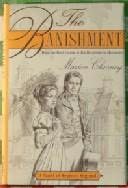
Chesney, Marion. 1996. The Banishment.
The Banishment is a Regency romance novel--smut-free--that is delightful in an unpretentious way. Perhaps not the best book in the world--Chesney is no Jane Austen or Georgette Heyer--but it is a fun, light read. If it has a flaw it is that it tells more than shows. The heroine of The Banishment is Isabella Beverley. She is the oldest daughter; she's been raised with wealth and prestige. But--and there are always buts in books--all that changes when her father gambles away the family home, Mannerling, and the family is humbled and humiliated. What's a girl to do? If her parents have any sway over their daughter, they'll try to arrange it that she marries the new owner, a Mr. Judd. No matter how untasteful, no matter how insane. But is that what she wants? Or is she maybe starting to realize just how wonderful Lord Fitzpatrick, an Irish viscount, really is?
© Becky Laney of Becky's Book Reviews
If you're reading this post on another site, or another feed, the content has been stolen.



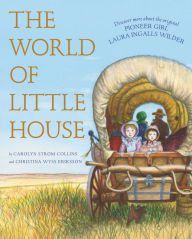
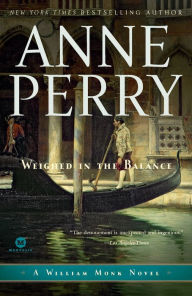

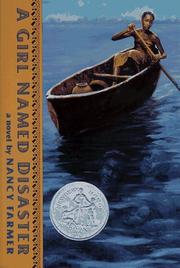


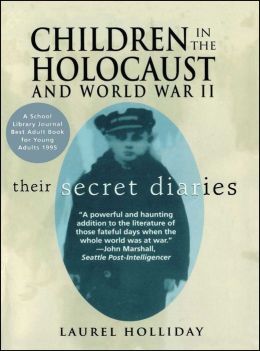
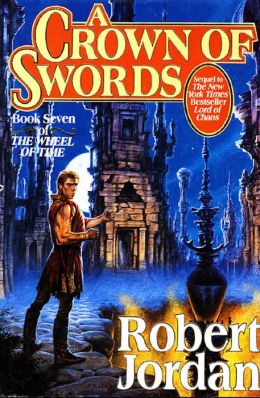
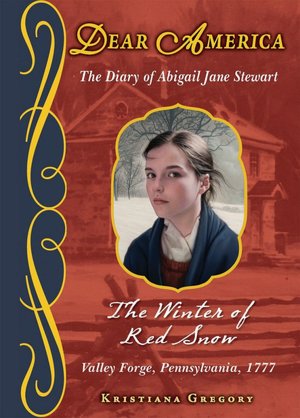

Sadly, I gave up on this series around book 5 or 6... They were fantastic books, just SLOW in the middles! Chewy on the edges, but mush in the middle. What aggrivated me the most was that as I trudged through the book, I would think "oh this is the last one, I'm going to read something else." then we get to the last 20 pages, and he sucks me into the next book.